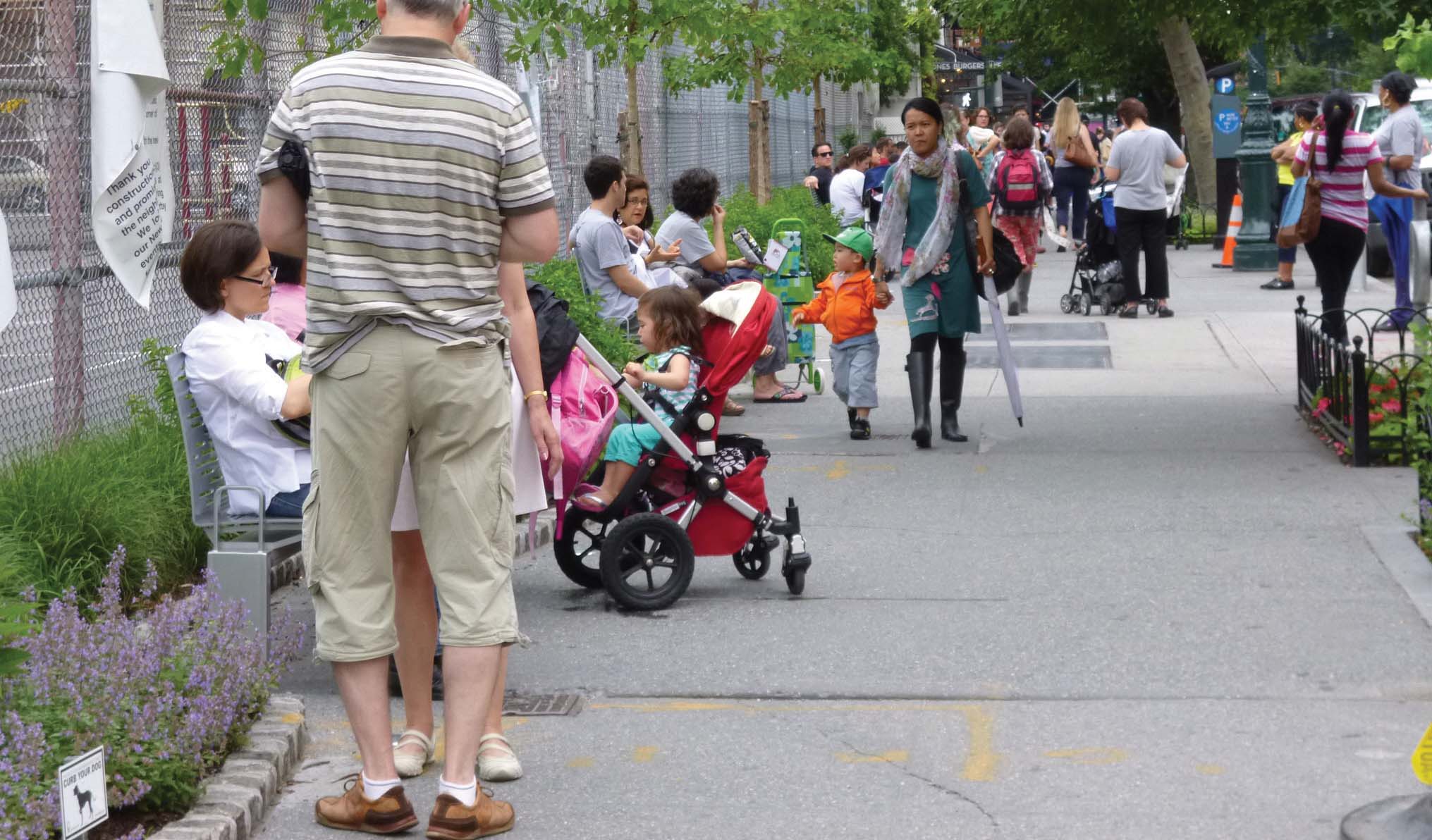Designing Resilient Streets
How do you design a space to maximize its social and ecological resiliency? A green space where the community gathers and plants help clean the air and absorb storm water. You might think that such a space could only be achieved in a large park like Freshkills, but the newly released 2013 Street Design Manual demonstrates how the street in front of your doorstep can be transformed into a place that fosters social interactions and supports wildlife.

This stretch of Columbus Avenue between 76th and 77th in Manhattan was recently re-designed to foster community and green space (Photo courtesy of Street Design Manual 2013)
The street design manual unveiled by Transportation Commissioner Sadik-Kahn at the 2013 MAS Summit highlights designs for “place making plazas” that transform endless swaths of concrete into gathering places. While the most visible of these transformations was the closing of Time Square, these plazas can be developed on a run-of-the-mill sidewalk by adding seating and landscaping to a barren wide stretch of concrete. These types of designs are successful at fostering community precisely because they are requested and maintained by the communities where they are installed. Adding places where neighbors can stop, smell the flowers, and get to know one another could be another way to boost social resiliency.
Not only do the new street designs foster more social connections amidst the hustle and bustle of the city, but they also strive to improve physical resiliency with suggestions for landscape design. The manual has recommendations for tree pits, bio swells, and rain gardens that will help reduce the issue of combined sewage overflow that overwhelms the city’s infrastructure. The guidelines on plantings also include information on storm and drought tolerance so that plantings can be made with future climate change in mind. While these plantings work to adapt to the effects of climate change, the plan also proposes steps to reduce carbon emissions with new LED street lamps.
We’re looking forward to seeing how this new street design manual transforms the urban landscape of NYC into one that has more capacity to withstand and adapt to climate change.




